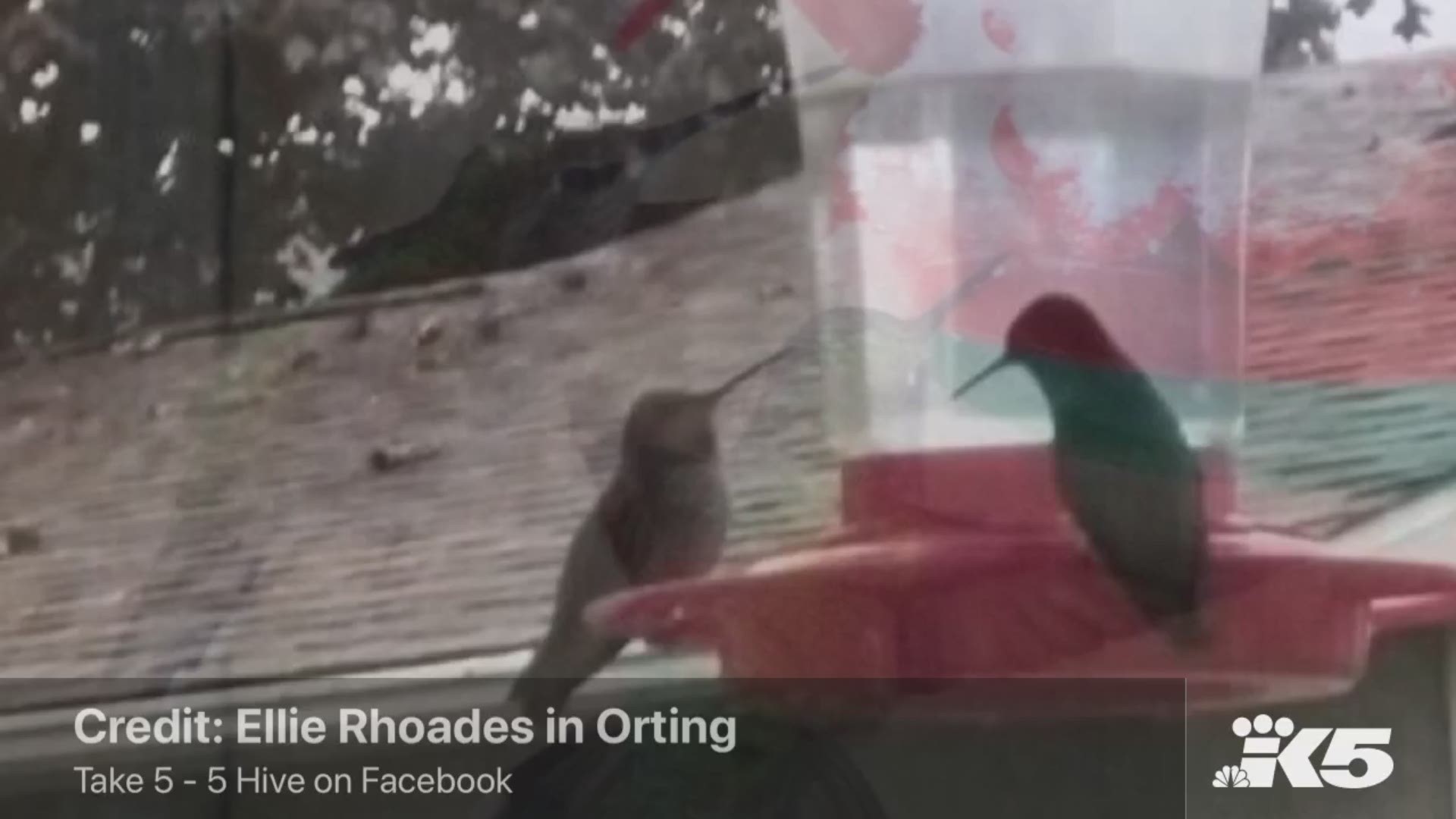SEATTLE — Although hummingbirds may be considered fair-weather visitors, Washington state has one species that can be seen year-round. The green-hued flier, Anna's Hummingbird, can be seen in gardens in Washington state throughout the winter.
But it's difficult to keep hummingbird feeders in a liquid state when temperatures drop. Some people set up elaborate systems to keep their feeders from freezing.
Do you have a system for keeping your birdbath or hummingbird feeder from freezing? Snap a photo and post it on our Facebook page or tag #K5Winter on your Instagram posts.
The Seattle Audubon Society offers the following tips for cold weather hummingbird feeding:
- Do NOT adjust the mix! Keep the mix at 1:4 ratio sugar to water. Nectar concentrations vary greatly among a variety of plants hummingbirds visit, but they are typically low in sugar. Recipes with a higher concentration of sugar do not necessarily benefit hummingbirds because it cannot travel up the grooves of their tongue easily. The excess sugar may also damage kidneys and liver. Though increasing the sugar may help to prevent freezing, our experts recommend staying consistent with a 1:4 mix of white sugar and water only. No honey, brown sugar, maple syrup or red dye is recommended. Pure sucrose is what they need to survive. A simple recipe of 1 part sugar and 4 parts water, mixed in a pan, brought to a boil, and then removed from heat and cooled is all that’s necessary for the birds. You may store extra in the fridge up to two weeks. Clean feeders once a week during cold weather and more often during warmer weather.
- Have two feeders and rotate them. The mix will begin to freeze around 29 degrees Fahrenheit. Rotating the feeders throughout the day will keep the fluid moving and available to the birds. Hummingbirds do not feed at night, so you can bring the feeders indoors. However, they start at dawn so get a feeder back out as early as possible. Anna's can be very territorial and may not share a feeder (especially multiple males), so having multiple feeders can help break up the fighting and competition for a single feeder.
- Don't enjoy setting your alarm for 5 a.m.? String Christmas lights around the feeder. The ambient heat can be just enough to keep the liquid thawed (depending on how cold it gets). You can also hang a trouble light nearby the feeding station, or from the bottom of the feeder. This is the light commonly used by car mechanics or garage enthusiasts. It has a little cage around it and a hook at the top. Depending on the watts, it can put out enough heat on those especially cold nights to keep the nectar from freezing.
- Duct tape a hand warmer to the feeder. Those hand warmers (or feet warmers) are pouches with chemicals in them that get activated once out of their packaging. They emit heat for approximately 7 hours.
- Try is plumbers heat tape. These flexible electric tapes are like a flat extension cord and can easily be wrapped around and taped to many types of feeders. Most heat tapes are equipped with a built-in thermostat in the cord. The wattage of these tapes is very low and does not draw a lot of energy. Try home supply stores and hardware stores for this product.
- Finally, don't stress too much about the welfare of the hummingbirds. Generally, our winters are mild and the cold snaps are usually not that long. Hummingbirds are capable of reducing their body temperature at night and conserving their energy. They roost in trees and shrubs and do not use nest boxes or bird houses. They need a lot of sucrose (nectar) during the day to keep them going, especially in the cold. In addition to nectar, hummingbirds will consume any insects they encounter to help them meet their protein, vitamin and mineral requirements. Insects can be found under bark and plants even during winter cold periods. Extended periods of cold such as the one we are experiencing right now, are especially hard on these small birds designed to spend winters in warmer climates. Some birds will not make it; however the strong ones will find a way to survive. Continuing to offer nectar is a way we can assist them.
The Seattle Audubon Society also recommends providing a water source for all wild birds during the year.

